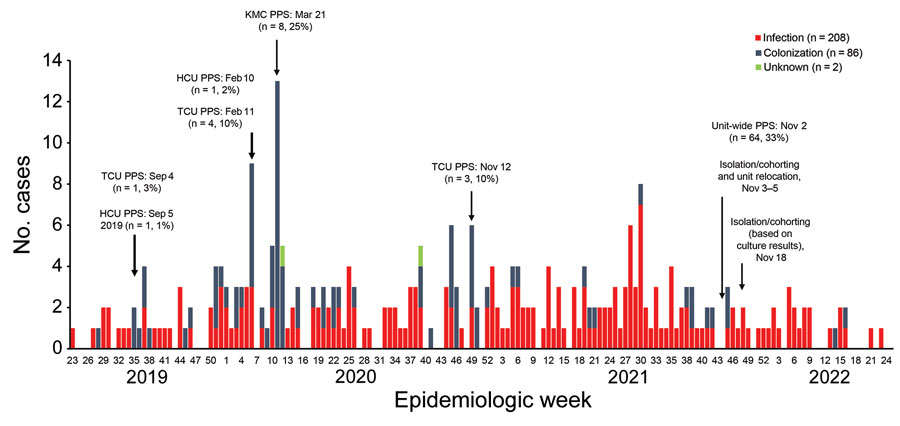Volume 29, Number 9—September 2023
Dispatch
High Prevalence of Candida auris Colonization during Protracted Neonatal Unit Outbreak, South Africa
Figure 1

Figure 1. Timeline of culture-confirmed Candida auris infection and colonization in neonatal unit, Chris Hani Baragwanath Academic Hospital, Johannesburg, South Africa, June 1, 2019‒June 24, 2022. HCU, high care unit; KMC, kangaroo mother and child care; PPS, point-prevalence survey; TCU, transitional care unit.
Page created: July 13, 2023
Page updated: August 20, 2023
Page reviewed: August 20, 2023
The conclusions, findings, and opinions expressed by authors contributing to this journal do not necessarily reflect the official position of the U.S. Department of Health and Human Services, the Public Health Service, the Centers for Disease Control and Prevention, or the authors' affiliated institutions. Use of trade names is for identification only and does not imply endorsement by any of the groups named above.